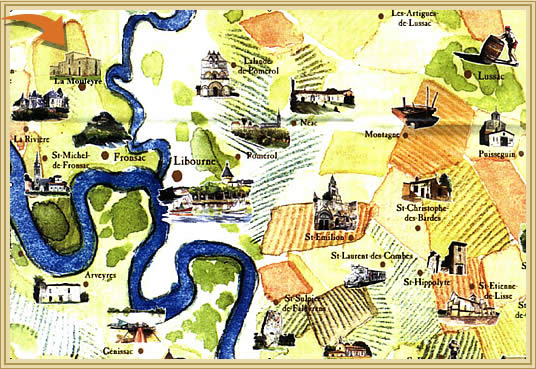 |
There
are those who claim that Fronsac was the first vineyard in Bordeaux.
Emperor Carolus Magnus built the first “château”
in 769 on the site (without a wine cellar of course!), which was named
Franciacus—the château of the Francs.
Fronsac was captured by the English many times, and later by the Protestants,
before falling into the hands of the king centuries later, in the
life of the illustrious Cardinal de Richelieu. The seigniory of Fronsac
then passed to the Cardinal’s family.It was the Cardinal’s
nephew, the Marshall of Richelieu ( a friend of Casanova) who introduced
the Court of Versailles to Fronsac wine, which was at the time even
more renowned than its neighbour Pomerol. It is said that this wine
was the Marshall’s favourite “infusion”!
As Robert Parker relates, “in the eighteenth and nineteenth
centuries, the vineyards sprinkled over the hillsides and hollows
of Fronsac and Canon-Fronsac regions, only several miles west from
Libourne, were better known than the wines of Pomerol, and sold for
higher prices than the wines of Saint Emilion. But because access
to Pomerol was easier and because most of the brokers had their offices
in Libourne, the vineyards of Pomerol and Saint Emilion were exploited
more than those of Fronsac or Canon-Fronsac. Consequently this area
fell into a long period of obscurity from which it has just recently
begun to rebund.”
Robert Parker says Fronsac and Canon-Fronsac wine was virtually unknown
until the mid-80s, but producers are now seeing a gradual awakening
of interest from wine enthusiasts. The wines were initially perceived
as attractively-priced substitutes for Pomerol and Saint Emilion wine,
but the best Fronsac and Canon-Fronsac wines have gradually become
recognized as rich, full, fairly big and highly colorful wines with
excellent aging potential.
An
history of Fronsac by Clive Coates
|
 |
|






